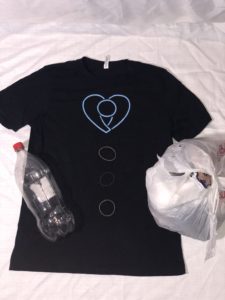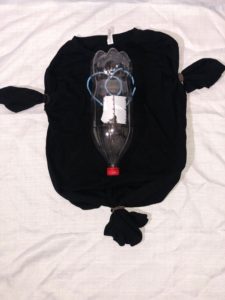Your cart is currently empty!
How To Make Your Own DIY CPR Manikin At Home
In the U.S., there are more than 350,000 out-of-hospital cardiac arrests each year. Cardiac arrest is when the heart stops beating as it should. Many of these cases occur in a home, where there is unlikely to be a medical professional. Because of this, immediate and high-quality CPR is not often administered. In fact, only 46 percent of those who suffer cardiac arrests outside of the hospital receive CPR from a bystander. However, CPR can double or even triple a victim’s chance of survival. The more people who know how to perform CPR, the more we can work to increase the survival rate of victims of cardiac arrest.
Knowing how to correctly perform chest compressions is necessary for any CPR provider. We’ve found a way to practice chest compressions without needing an actual CPR manikin. You can create your own CPR manikin using items you may already have laying around your house!
Importance of CPR in Saving Lives
Chest compressions are the most important component of CPR. Performing chest compressions helps to support the function of the heart when it is not beating as it should. When someone is performing CPR, they are pushing blood throughout the body, allowing the delivery of oxygen and other important nutrients carried through the blood to the rest of the body. This helps to keep a cardiac arrest victim’s brain and other important organs from dying off. Without effective CPR, brain damage can occur within four to six minutes after the onset of cardiac arrest and is almost certain after ten minutes.
Knowing how to perform chest compressions is a life-saving skill. Compression-only CPR is a form of CPR that can be used on an individual 18 years or older in age who you witnessed falling victim to cardiac arrest. Uninterrupted chest compressions has been associated with higher survival rates than traditional CPR. This is because chest compressions work to delay the death of the victim’s body tissue.
How to Create a Manikin

To create a manikin, you first need to obtain the following supplies:
- 1 T-Shirt
- 1 2-Liter Plastic Bottle
- 3 Rubber Bands
- Some type of filler (newspaper, paper or plastic bags)
- Ensure that the 2-liter bottle is completely empty with its cap screwed on tightly.
- Take your t-shirt and tie a rubber band around each of the two arms and the bottom of the shirt.
- Insert the 2-liter bottle into the shirt in the center of the where a person’s chest would be on their breastbone.
- Take your filler and insert it into the shirt around the bottle, ensuring that the bottle stays aligned down the front center of the shirt.
Check out our new video on how to create your own CPR manikin so that you can practice!
How to Practice Chest Compressions

Now you have a CPR manikin you can practice performing CPR on! When it comes to performing CPR, remember the acronym- CAB. This stands for compressions, airway, and breathing which are the steps in CPR in the order they should be performed. CPR consists of 30 chest compressions followed by 2 breaths.
To perform chest compressions, follow these steps:
- Place your hand in the center of the chest on the middle of the breastbone.
- Push down into the chest, compressing at a depth of at least one-third the chest.
- Let the chest rise back up before pressing back down.
- Continue performing steps 2 and 3 at a rate of 100-120 compressions per minute.
To open the airway and deliver breaths, follow these steps:
- Open the airway using either the head-tilt-chin-lift maneuver or jaw thrust.
- Blow into the mouth for one second, creating a tight seal with your mouth or pocket mask.
- Watch for chest rise. This will ensure the breath was administered correctly.
- Deliver one more breath, and then return to chest compressions.
We strongly encourage you to learn how to perform CPR so that you can be prepared to save a life.
How to Become a Life Saver
While a real CPR manikin is the best option for practicing your CPR skills, this is a more budget-friendly option that stills allow you to achieve your goals. Chest compressions help to supply the brain and other important organs with oxygen to keep them living when someone is experiencing cardiac arrest. Practice makes perfect. Hone in your life-saving skills by learning and practicing CPR.
Become CPR, AED, & First Aid certified online today through National Health Care Provider Solutions. NHCPS is partnered with the Disque Foundation through the Save a Life Initiative, which works to provide free life support trainings to in-need communities around the globe.
The more people who are CPR providers, the more lives can be saved. Set up a training in your community where you can use DIY CPR manikins to allow others to learn CPR. You can also partner with the Disque Foundation by scheduling a CPR training. Just fill out this sign up form.







Leave a Reply